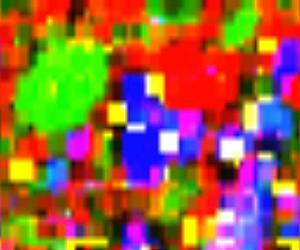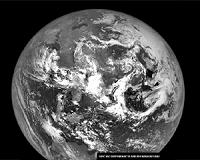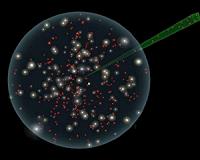|
 Man In The Moon Has 'Graphite Whiskers'
Man In The Moon Has 'Graphite Whiskers'Pasadena CA (JPL) Jul 02, 2010 In a new analysis of a lunar sample collected by Apollo 17, researchers have detected and dated carbon on the moon in the form of graphite - the sooty stuff of pencil lead - which survived from around 3.8 billion years ago, when the moon was heavily bombarded by meteorites. Up to now, scientists thought the trace amounts of carbon previously detected on the surface of the moon came from the solar wind. Some of the graphite revealed by the new study appeared in a rare rolled form known as "gr ... read more |
. |
|
|
Free Space, Earth, Energy And Military Newsletters - Delivered Daily |
| . | . |
 |
| .. |
Students Record Spellbinding Video Of Disintegrating Spacecraft Huntsville AL (SPX) Jun 29, 2010
Huntsville AL (SPX) Jun 29, 2010Last year, high school science teacher Ron Dantowitz of Brookline, Mass., played a clever trick on three of his best students. He asked them to plan a hypothetical mission to fly onboard a NASA DC-8 aircraft and observe a spacecraft disintegrate as it came screaming into Earth's atmosphere. How would they record the event? What could they learn? For 6 months, they worked hard on their assi ... more Earth To Lend Helping Hand To Comet Craft  Pasadena CA (SPX) Jun 28, 2010
Pasadena CA (SPX) Jun 28, 2010NASA's Deep Impact/EPOXI spacecraft will fly past Earth this Sunday (June 27). Mission navigators have tailored this trajectory so the spacecraft can "hitch a ride" on Earth's gravity field, which will help propel the mission toward its appointment with comet Hartley 2 this fall. At time of closest approach to Earth, the spacecraft will be about 30,400 kilometers (18,900 miles) above the S ... more Deep Impact Spacecraft To Make Last Swing By Earth On Way To Second Comet  College Park MD (SPX) Jun 28, 2010
College Park MD (SPX) Jun 28, 2010On Sunday, NASA's historic Deep Impact spacecraft will fly past Earth for the fifth and last time on its current University of Maryland-led EPOXI mission. At time of closest approach to Earth, the spacecraft will be about 30,400 kilometers (18,900 miles) above the South Atlantic. Mission navigators have tailored this trajectory to change the shape of the spacecraft's orbit and to boost it ... more |
.. |
 The Earth From The Moon  The Coolest Stars Come Out Of The Dark  Instant online solar energy quotes Solar Energy Solutions from ABC Solar |
.. |
|
|
Free Space, Earth, Energy And Military Newsletters - Delivered Daily |
|
|
. |
 Japan lab finds trace of gas in deep space asteroid pod
Japan lab finds trace of gas in deep space asteroid podTokyo (AFP) June 24, 2010 Japan's space agency said it had found a trace of gas Thursday in a capsule thought to contain asteroid dust that was brought back to Earth after a multi-billion-kilometre (mile) space journey. Researchers at the Japan Aerospace Exploration Agency's Sagamihara Campus in Kanagawa began opening the Hayabusa capsule, a process expected to take about a week, JAXA said. Using an optical microscope, they plan to analyse the inside of the container, which was shielded by a Frisbee-sized capsule. Op ... read more |
| The contents herein, unless otherwise known to be public domain, are Copyright 1995-2010 - SpaceDaily. AFP and UPI Wire Stories are copyright Agence France-Presse and United Press International. ESA Portal Reports are copyright European Space Agency. All NASA sourced material is public domain. Additional copyrights may apply in whole or part to other bona fide parties. Advertising does not imply endorsement, agreement or approval of any opinions, statements or information provided by SpaceDaily on any web page published or hosted by SpaceDaily. Privacy statement |
| Previous Issues | Jul 01 | Jun 30 | Jun 29 | Jun 28 | Jun 25 |